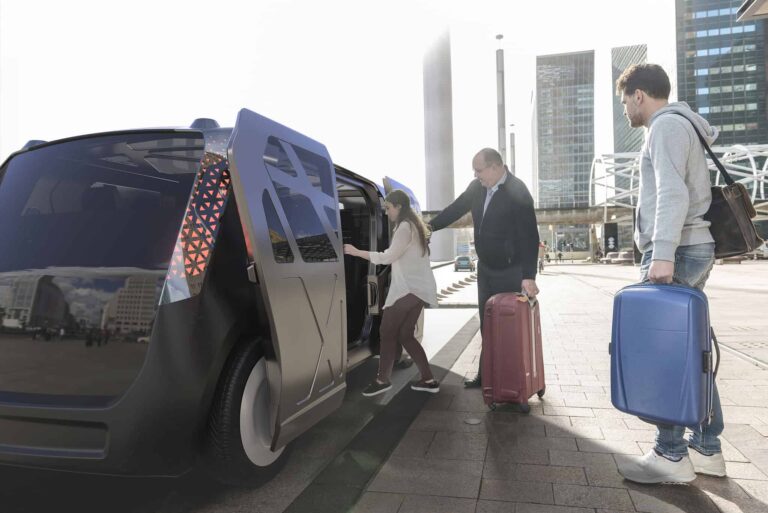Introduction to Autobà
Autobà represents a revolutionary idea in urban transportation, aimed at addressing the myriad challenges faced via modern towns. With growing populations and increasing needs on infrastructure, traditional modes of transportation often fall brief in imparting green, reliable, and eco-friendly answers. Autobà seeks to convert how humans pass within towns, leveraging advanced technology and progressive designs to create a greater sustainable and convenient urban transit gadget.
The Concept Behind Autobà
The center idea in the back of Autobà is to integrate self reliant electric powered automobiles (AEVs) into a unbroken public transportation community. Unlike conventional buses or trams, Autobà cars function independently, guided by using sophisticated algorithms and real-time information to optimize routes and schedules. This system eliminates the want for human drivers, reducing operational costs and minimizing human blunders, which could cause injuries and delays.
Autobà vehicles are designed to be modular, allowing for bendy configurations primarily based on passenger demand. During height hours, larger devices can be deployed to deal with extra riders, whilst smaller units can operate at some stage in off-peak instances to preserve efficiency without useless electricity consumption. The vehicles also are ready with superior protection capabilities, inclusive of collision detection and avoidance structures, making sure a stable adventure for all passengers.
Environmental Impact
One of the maximum significant blessings of Autobà is its capacity to reduce the environmental footprint of city transportation. Traditional buses and motors contribute considerably to air pollution and greenhouse gas emissions. In contrast, Autobà’s AEVs are powered through power, preferably sourced from renewable strength. This shift from fossil fuels to easy energy can appreciably lessen carbon emissions, assisting towns meet their weather dreams and enhance air first-class for citizens.
Additionally, the performance of Autobà direction optimization can similarly enhance its environmental advantages. By the usage of real-time records to keep away from visitors congestion and minimize idle times, the device reduces electricity intake and enhances the general sustainability of city transit. The reduction in noise pollutants, a not unusual problem with traditional cars, additionally contributes to a more best city environment.
Integration with Existing Infrastructure
A important factor of Autobà fulfillment lies in its ability to combine with existing transportation infrastructure. Rather than completely overhauling present day structures, Autobà can complement and beautify them. For instance, Autobà automobiles can be coordinated with conventional buses, trains, and trams to create a complete community that covers all components of the metropolis.
Integration extends beyond simply transportation modes; Autobà can also paintings with city making plans tasks. By aligning with metropolis improvement tasks, Autobà can ensure that new routes and stations are strategically located to serve excessive-demand areas and assist financial increase. This synergy among technology and urban planning can result in greater livable towns, where transportation is seamlessly woven into the city fabric.
User Experience
The person enjoy is at the coronary heart of the Autobà concept. With the upward thrust of journey-sharing apps and on-demand offerings, passengers expect convenience, reliability, and luxury. Autobà addresses those expectancies thru several key capabilities. Firstly, the autonomous nature of the vehicles lets in for particular and well-timed arrivals, decreasing the uncertainties related to conventional public transportation.
Passengers can ebook rides via a user-friendly mobile app, which provides actual-time updates on automobile locations and expected arrival instances. The app additionally gives customized direction suggestions primarily based on character options and journey history, making the revel in tailor-made to each person. Inside the vehicles, passengers can revel in facilities consisting of Wi-Fi, charging ports, and comfortable seating, remodeling transit time into efficient or enjoyable periods.
Challenges and Future Prospects
Despite its promising ability, the implementation of Autobà isn’t with out demanding situations. The preliminary funding in infrastructure and generation may be sizable, requiring widespread economic commitment from city governments or personal traders. Moreover, the transition to independent cars involves overcoming regulatory hurdles and making sure public popularity.
Safety and cybersecurity also are essential concerns. Ensuring that the independent structures are foolproof and resilient towards cyber-attacks is paramount to gaining public consider. Continuous trying out and improvement of the technology are important to deal with those troubles and exhibit the reliability of Autobà.
Looking beforehand, the future prospects of Autobà are shiny. As generation advances and charges lower, the adoption of autonomous electric motors is anticipated to grow. Cities around the arena are more and more recognizing the need for sustainable and green transportation solutions, and Autobà stands at the vanguard of this alteration. By fostering collaborations between era groups, city planners, and policymakers, Autobà can pave the way for smarter, greener, and greater linked towns.
Conclusion
Autobà represents a formidable vision for the destiny of urban transportation. By harnessing the strength of independent electric powered automobiles, it offers a approach to among the demanding situations confronted with the aid of modern towns. From reducing environmental effect and integrating with current infrastructure to improving person revel in and addressing future demanding situations, Autobà has the capability to redefine how we pass within city areas. As cities keep growing and evolve, modern solutions like Autobà can be important in creating sustainable, livable environments for all residents.
